

The Classic Review
- Albums Reviews
- Beginners Guides
- Search for: Search Button
Mendelssohn – Symphony No. 3 (“Scottish”) – A Beginners Guide
David a. mcconnell - february 23, 2024 april 24, 2024.
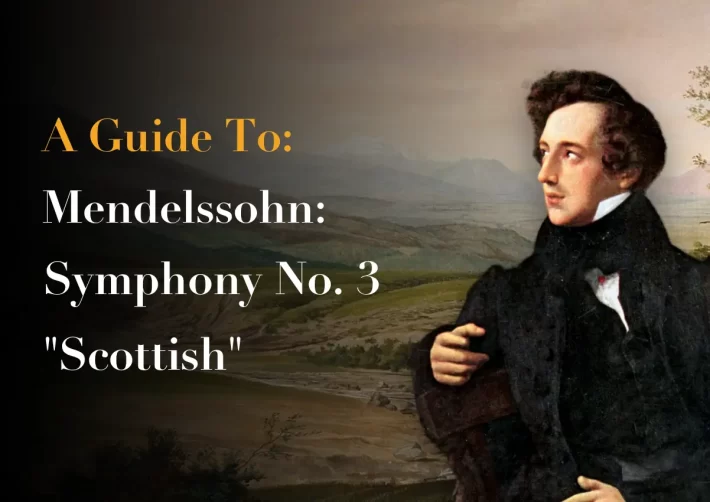
Editor’s note: Timings on this guide are taken from Edward Gardner’s recording with the Birmingham Symphony Orchestra (Chandos) :
In April 1829, the 20-year-old Felix Mendelssohn made his first journey to England. He took the capital by storm, conducting his first symphony with the London Philharmonic and playing Beethoven’s Emperor concerto from memory, which thrilled audiences. He even organized a benefit concert for Silesian flood victims involving many of the best-known soloists of the time. By mid-July, Mendelssohn was ready for a break, and at the end of the month he and his friend, Karl Klingemann, traveled to Edinburgh to embark on a walking tour of Scotland.
One of the first places they visited was Edinburgh’s Holyrood Palace and Chapel. Mendelssohn wrote to his family to describe the experience: “The chapel beside it has lost its roof and is overgrown with grass and ivy, and at that broken altar Mary was crowned Queen of Scotland. Everything there is ruined, decayed and open to the clear sky. I believe that I have found there today the beginning of my Scotch Symphony.” It is indeed this initial sketch (with slight modifications) that became the opening theme of the slow introduction and the melodic DNA for most of the themes in the symphony.
When Mendelssohn returned to Germany other pressing projects drew his attention away from the Scottish symphony , and he found it difficult to return to. While touring Italy in October 1830 he wrote to his family: “A genial blue sky outside and a journey to Naples in my every thought…Who can wonder that I find it impossible to return to my misty Scottish mood?”
More Classical Music Guides
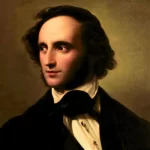
Several years later the composer finally found the time and inspiration to complete the work, finishing the score on January 20, 1842. Mendelssohn conducted the premiere in Leipzig with the Gewandhaus Orchestra on 3 March, and a few months later conducted its wildly successful London premiere. He even asked Queen Victoria if he could dedicate the symphony to her, an offer she accepted with immense pleasure.
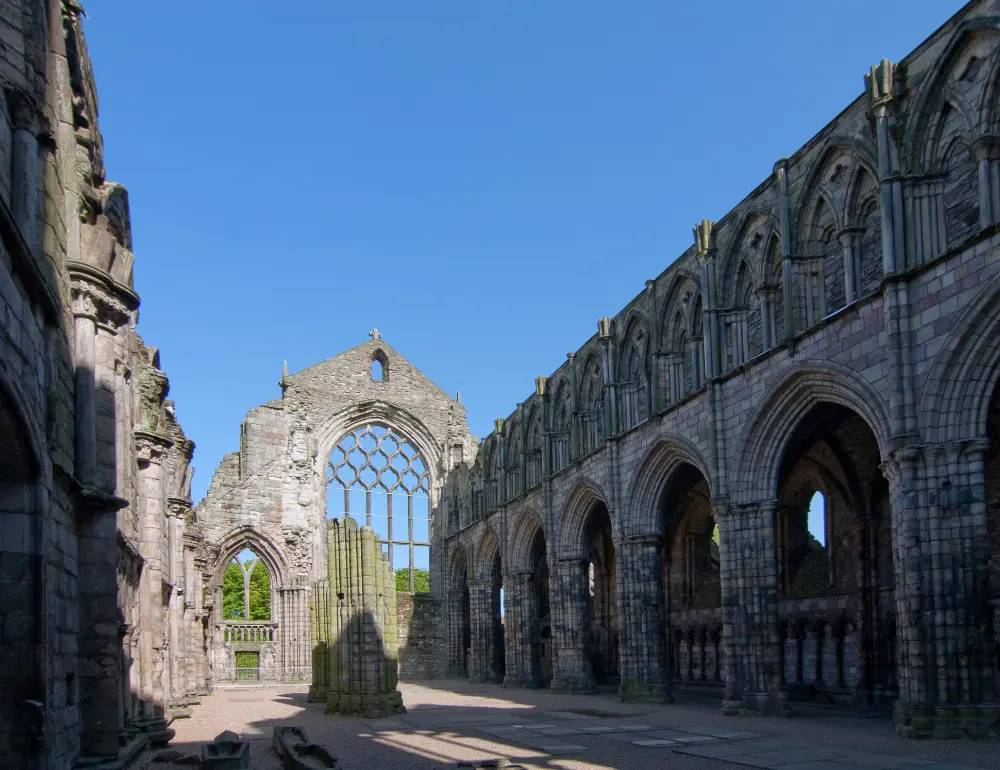
More than one writer has suggested this movement reflects Mendelssohn’s memory of his visit to Durham Cathedral where, after church services, he witnessed a bag pipe competition. Mendelssohn was also impressed by the kilts and ‘full beards’ of the men. There is an undeniable party atmosphere, though in a superior performance the listener is made aware of just how much of this music is supposed to be played softly. Like the first movement, the writing winds down to a gentle pizzicato conclusion.
Movement III: Adagio
The opening nine bars portend something anxious, while creating a harmonic transition from the F major of the previous movement to the A major of this one. When the new key is reached the music finds its first moment of true calm, as the first violins play a lyrical, chaste melody over an imitative harp accompaniment – this could easily be an orchestration of one of the “Lieder ohne Wrote.” More than one writer has suggested that the harp-like accompaniment is inspired by Walter Scott’s story of a harpist playing in a cave above Loch Katrine. The melody is gently interrupted by a funeral march, its marcato articulation and dotted rhythms negating the peace instilled by the first theme. The initial theme reasserts itself, and the remainder of the movement is a struggle between calm lyricism and growing grief (perhaps the march is meant to recall the funeral cortege for Mary, Queen of Scots). Mendelssohn knew and admired Schiller’s “Maria Stuart,” the story of the Queen’s final days before her execution – is that what this music seeks to portray?
Movement IV: Allegro vivacissimo — Allegro maestoso assai
Mendelssohn’s original heading was “Allegro geurriero” (war-like), surely a reference to Scotland’s history of war and rebellion. Mendelssohn eventually replaced the pictorial term with ‘vivacissimo.’ Yet the music’s jagged dissonance, and thorny contrapuntal writing are certainly war-like, as the two-note wails played by flutes and oboes at bar 183 (track 9, 2’58”) mimic the cries of mothers and wives lamenting the loss of loved ones on the battlefield.
More than one writer has expressed disappointment in the Coda, arguing that it lacks the inspiration of the rest of the composition and fails to bring the necessary emotional catharsis. Interestingly, it is the clearest reference to Mary in the score: the composer’s 1830 setting of ‘Ave Maria’ includes a tenor solo that uses the same melodic figure, in the same key and meter, heard in the opening of this Coda. Yet few listeners can remain unmoved by the music’s dramatic swing from minor to major, or by the move from simple, steady rhythms to a complex, celebratory pulse as the horns triumphantly announce music of victory and joy.
Mendelssohn – Symphony No. 3 (“Scottish”)- The Best Recordings
The classic recording, london symphony orchestra & peter maag; decca.
The excellence of Decca’s 1960 engineering offers a level of transparency and detail that several newer recordings lack. Maag’s conducting is masterful, and with excellent playing from every section of the London Symphony, this recording is fully deserving of its classic status.
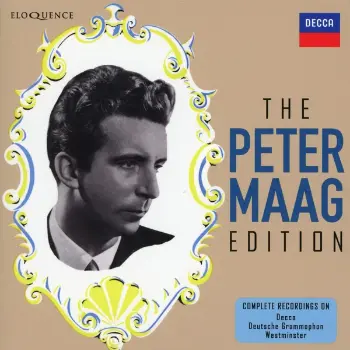
Find offer for this album on Amazon.
Two 1970s Recordings
Vienna philharmonic orchestra & christoph von dohnányi, decca, berlin philharmonic orchestra & herbert von karajan; dg.
The Vienna/Dohnányi partnership is fabulous, and there are few, if any, performances in which the playing is so bewitchingly beautiful. Nevertheless, Dohnányi’s cool, objective approach leaves one impressed but unmoved. DG’s engineering in Berlin does not match Decca’s in Vienna, but the playing is every bit as good and more characterful. Karajan’s Adagio is challengingly slow, as if the movement is early Bruckner – yet it works. Both performances, in their differing ways, serve the music well.
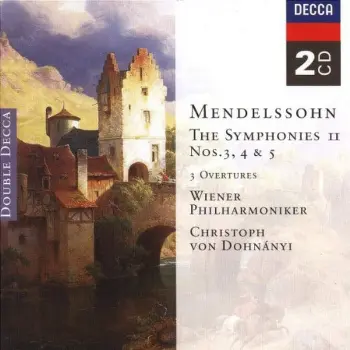
Christoph von Dohnányi
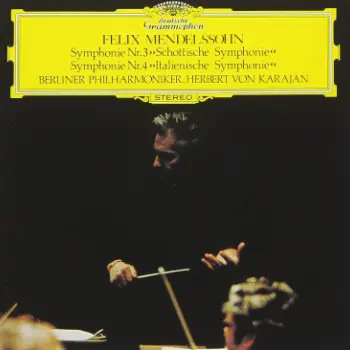
Herbert von Karajan
Historically informed recording, kammerakademie potsdam & antonello manacorda; sony classical.
There have been several recordings using period instruments (Norrington, Goodman, Brüggen and Heras-Casado spring to mind) and several that adopt period performance ideals (Fey, Nézet-Séguin, de Vriend, and Dausgaard). Manacorda uses a combination of the two, incorporating both original and modern instruments. Together with the Potsdam players, they stand out with a reading of tremendous energy and deep emotion, the orchestral sound richer than one might expect. Manacorda’s tempos are more measured, and he encourages a singing cantabile line from his players – a historically informed performance that embraces and heightens the music’s Romantic spirit.
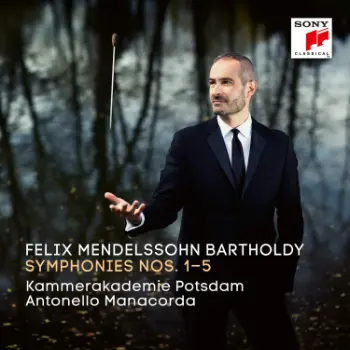
Antonello Manacorda
Prime recommendation, city of birmingham symphony orchestra & edward gardner; chandos.
A recording with playing of superb technical fluency, shaped with an organic fluency equaling Maag’s performance. Though tempos are on the fast side, it never sounds breathless, just exhilarating. The palpable chemistry between orchestra and conductor, as well superior Chandos Super-Audio sound, make this mandatory listening. Currently available on streaming services like Apple Music and Amazon Music.
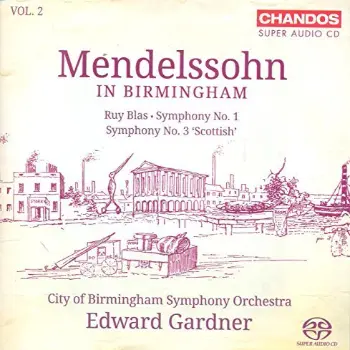
Edward Gardner
Support Us We hope this guide has helped you navigate the wonderful world of classical music! If you enjoyed this free resource, consider making a donation to The Classic Review. Your generosity helps us keep the music playing by allowing us to publish informative guides, and insightful reviews. Every contribution, big or small, allows us to continue sharing our passion for classical music with readers like you. Donate Here
Included with an Apple Music subscription:
Latest classical music posts.
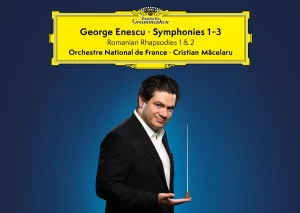
Review: Enescu – Symphonies Nos. 1-3 & 2 Romanian Rhapsodies – Cristian Mǎcelaru
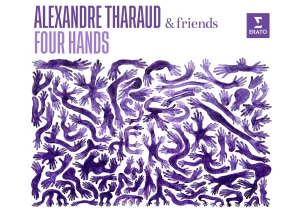
Review: “Four Hands” – Alexandre Tharaud

Review: Chopin – Études – Yunchan Lim
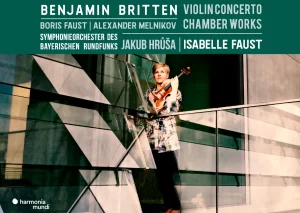
Review: Britten – Violin Concerto, Chamber Works – Isabelle Faust

Review: “Mozart, You Drive Me Crazy!” – Golda Schultz, Soprano
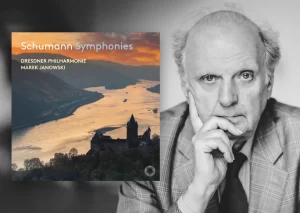
Review: Schumann – Complete Symphonies – Dresdner Philharmonie, Janowski
Read more classical music reviews or visit The Classic Review Amazon store
Follow Us and Comment:

Get our periodic classical music newsletter with our recent reviews, news and beginners guides.
We respect your privacy .
James McCarty February 23, 2024 at 6:45 pm
I can’t find any verification that the Kammerakademie Potsdam is a period instrument orchestra. There is nothing about it in the liner notes, and the photo shows modern instruments.
Matan Oren February 23, 2024 at 8:41 pm
Kammerakademie Potsdam/Manacorda’s performance is hybrid, only brass and timpani are Period. Perhaps that’s why the orchestral sounded fuller to you 😉
gardening tips February 24, 2024 at 5:48 am
It’s really a cool and helpful piece of information. I’m glad that you shared this helpful information with us. Please stay us up to date like this. Thank you for sharing.
Comments are closed.
Editor's Choice, April 2024

We respect your privacy .
Peter Medhurst
- Photographs
- Online Lectures & Shop
- Sea Fever Study Day – BBC interview
- On Christmas Night CD
- Handel & His Satellites CD
- Tyme at the Virginalls CD
- The Songs of England
- Sigh No More Ladies – Peter Medhurst
- Peter Medhurst plays ‘The Scotish Gigg’
- Brother James’ Air
- Go to the Devil and Shake Yourself – John Field
- The Arts Society
- 1. A musical jewel by Telemann
- 2. Wagner and the Numinous
- 3. Publish and be damned – musical scores
- SALZBURG IN ADVENT 28 Nov-3 Dec 2024 – FULL
- SALZBURG IN ADVENT 22-27 Nov 2024
- MADRID: MUSIC & ART 2-7 November 2024
- OXFORD: MUSIC & THE ARTS 1-6 September 2024
MENDELSSOHN IN SCOTLAND 2-8 May 2023
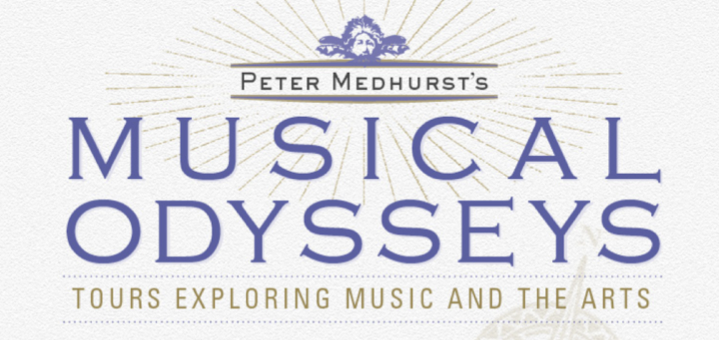
MENDELSSOHN IN SCOTLAND
The 1829 tour of the highlands, 7 days in the north, departing 2 may 2023.

7 days from £2,799 • Departing 2 May 2023
Download brochure here: Mendelssohn in Scotland brochure
Introduction
“Next August I am going to Scotland, with a rake for folksongs, an ear for the lovely, fragrant countryside, and a heart for the bare legs of the natives. Klingemann, you must join me . . . . and fly to Scotland.” And so it was that in 1829, the 20-year-old German composer, Felix Mendelssohn resolved to set off on a two-week journey through Scotland with his London- based friend, Karl Klingemann. The adventure was to supply Mendelssohn with inspiration for some of his major works and contributed to a lifelong connection that the composer enjoyed with Great Britain. The tour follows Mendelssohn’s journey from Edinburgh to Glasgow via the highlands and includes a visit to the Isle of Staffa to view Fingal’s Cave.
We depart in the morning from London’s Victoria Coach station and make our way north to Durham – one of the stopping places on Mendelssohn’s original itinerary. We have lunch on arrival, followed by a guided tour of Durham’s magnificent cathedral, renowned for being a masterpiece of Norman architecture and which Nikolaus Pevsner described as ‘one of the great architectural experiences of Europe’.

After some time spent at leisure in the city, we journey on to Newcastle for an overnight stay at the 4* Copthorne Hotel Newcastle, located in the heart of the city. In the evening, we meet for dinner in the restaurant.
After checking out of our hotel, we walk to the Cathedral Church of St Nicholas, where the famous composer and writer, Charles Avison, had been organist in the 18th century. The coach will then take us north to the Scottish Borders for a visit to Abbotsford House, home and workplace of the novelist, Sir Walter Scott. This fantastical building started life as a modest farmhouse, which between 1811 and 1824 Scott steadily transformed into a mansion, through adding a library, a study, a large dining Room, an armoury, as well as turrets and battlements. In short, Scott created what he himself described as ‘a sort of romance in architecture’.

After a guided tour, we have lunch in the restaurant, before paying a brief visit to nearby Melrose Abbey, which Mendelssohn sketched during his visit. We then make our way to the Ballathie Hotel, situated 25 miles north of Perth, which will be our base for the five nights that we spend in Scotland. In the early evening we have a lecture on Mendelssohn, which in turn is followed by a drinks reception and dinner.
The morning will be spent in Perth visiting the local Art Gallery and Museum, as well as the Fergusson Art Gallery – an old converted water tower and a fine piece of the city’s architecture. The gallery displays superb works by John Duncan Fergusson, the celebrated Scottish Colourist, and his wife, Margaret Morris, who was a ground-breaking modern dancer. A range of paintings and memorabilia illustrate the lives of these two remarkable artists. After lunch, we visit the picturesque village of Dunkeld, whose glory is the ruined medieval cathedral, situated on the banks of the River Tay. Part of the building has been converted into a place of worship, and here Peter will play a range of organ pieces connected with the Scottish theme of the week.

We then take a walk through the nearby Perthshire Forest to visit the Hermitage, a picturesque folly built in 1757. Decorated with mirrors, sliding panels and paintings, it has recently been refurbished to re-create the illusions of shock, surprise and amazement that were the aims of the folly’s original concept. This too, was visited by Mendelssohn. We return to the hotel for relaxation and dinner.
The main focus of the day is a visit to Blair Atholl for a guided tour of the castle followed by lunch in its restaurant. However, en route, we make a stop at one of the finest vistas in the whole of Scotland, the so-called ‘Queen’s View’ located in Highland Perthshire, overlooking Loch Tummel. Whether the location is named after Queen Victoria, who visited in 1866, or after King Robert the Bruce’s wife, Queen Isabella of Scotland, some 550 years earlier, is unknown, but whichever it is, the magnificent view is second to none.
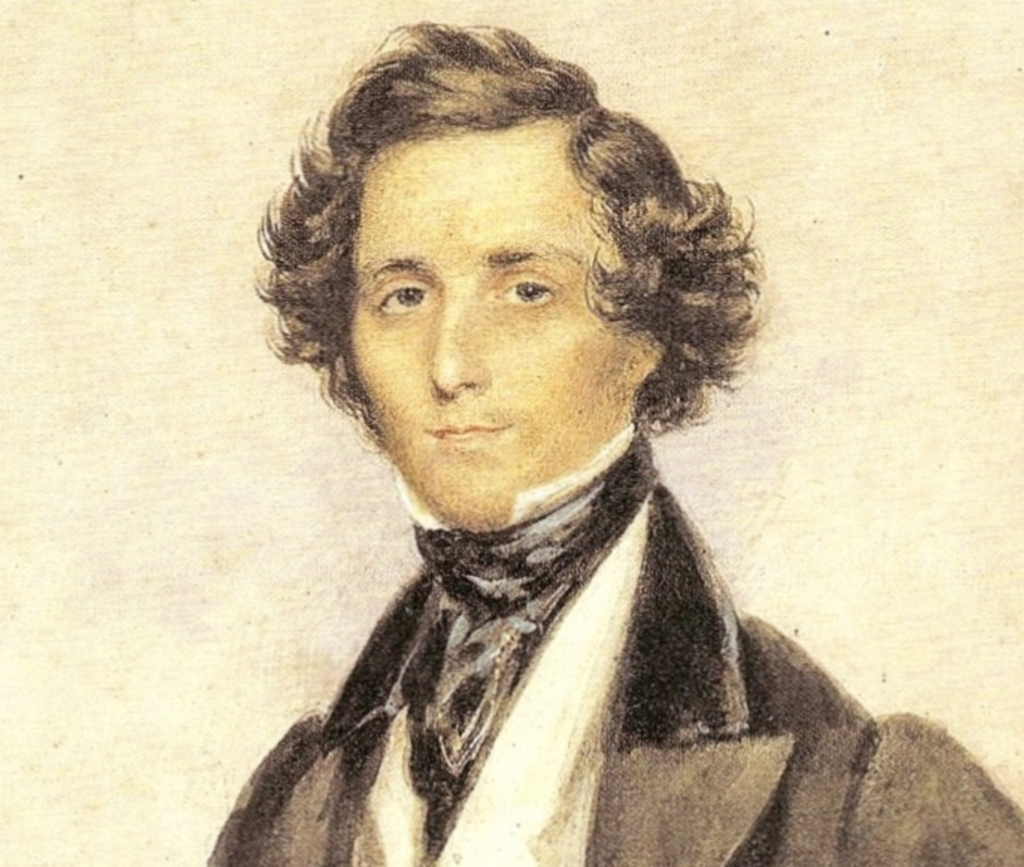
By contrast to this peaceful setting, Blair Castle, seat of the Dukes of Atholl, has witnessed both tranquil and turbulent times, and over its 750 years has been enlarged and adapted to suit the needs of successive generations of the family. Here we enjoy a private tour of the many treasures, housed within its 18th century interiors. In the afternoon we make our way back to the hotel via Aberfeldy, where we walk – weather permitting – to view the Falls of Moness, a 150m high waterfall tucked away in the Birks of Aberfeldy. Again, this was also a stopping point for Mendelssohn on his journey. Dinner is at the hotel.
Today we journey to Edinburgh to spend the morning in the Scottish National Gallery, located on The Mound in the city centre, close to Princes Street. The gallery houses Scotland’s national collection of fine art, spanning Scottish and international art from the beginning of the Renaissance up to the start of the 20th century. Highlights in the collection include works by Bernini, Titian, Vermeer, Ramsey, Monet and Gauguin.

Following lunch, we spend the afternoon in the Palace of Holyroodhouse, the official residence of the British monarch in Scotland. After Mendelssohn had stood in its ruined chapel on 30 July 1829, he wrote to his parents ‘everything around is broken and mouldering, and the bright sky shines in. I believe I found today in that old chapel the beginning of my Scottish Symphony’. We return to the hotel for relaxation and dinner.
Today we have an early start in order to catch the boat that will take us to view Fingal’s Cave on Staffa, one of the Western isles, and the inspiration for Mendelssohn’s overture ‘The Hebrides’. The famous cave is made up of basalt rock formations, including stepped columns causing Mendelssohn’s companion, Klingemann, to remark ‘its many pillars make it look like the inside of an immense organ, black and resounding’.

The boat will then take us to the Isle of Iona where we have lunch and pay a visit to the Abbey, founded by Columba in 563 and renowned for its tranquillity and natural environment. In Mendelssohn’s day the Abbey was in ruins, but since then it – as well as its associated buildings – have been restored to their former glory. We then retrace our steps to the hotel for a late dinner.
As Mendelssohn did at the end of his Highlands tour, we make our way to Glasgow, but unlike him we spend the morning in the recently re-opened Burrell Collection, housed in an especially built structure, located to the south of the city. The international and eclectic artifacts were acquired over many years by Sir William Burrell, a wealthy Glasgow shipping magnate and art enthusiast. The collection contains impressive medieval art, including stained glass and tapestries, oak furniture, medieval weapons and armour. It also has Islamic art, items from ancient Egypt and China, Impressionist works by Degas and Cézanne, as well as modern sculpture. After lunch, we journey to Glasgow Central Station to travel first class back to London Euston, where we arrive in good time for people to make their homeward journeys.
End of the tour.
Tour limited to 24 passengers Organ recital by Peter at Dunkeld Cathedral All excursions, guided tours & entrance fees included 4* hotels in Perthshire & Newcastle All meals included (breakfast, lunch & dinner) Private drinks reception on Day 2 Professional local guide Days 3 to 6 Private executive coach First Class train travel from Glasgow to London Euston Listening headsets
Durham Durham Cathedral – guided tour Cathedral Church of St Nicholas Abbotsford House – guided tour Melrose Abbey Perth Museum & Art Gallery Fergusson Art Gallery Dunkeld Cathedral with organ recital by Peter The Hermitage, Perthshire Forest Queen’s View’ overlooking Loch Tummel • Blair Atholl Blair Castle – guided tour Falls of Moness, Aberfeldy Edinburgh Scottish National Gallery Palace of Holyroodhouse Fingal’s Cave on Staffa Iona Abbey Glasgow The Burrell Collection
Extras to the tour
Insurance (including Covid cover) £34 Single room supplement £259 Gratuities

While in Scotland, we stay five nightsat the 4* Ballathie House Hotel (www.ballathiehousehotel.com), a traditional 4* Scottish country house hotel located around 15 miles to the north of Perth on the banks of the River Tay. Facilities at the hotel include a two AA Rosettes restaurant and a bar. For the first night of our tour, en route to Scotland, we stay at the centrally located 4* Copthorne Hotel Newcastle (www.millenniumhotels.co.uk). At both hotels dinner is included each night and all rooms are en suite and feature television, telephone and hairdryer.
FOR FURTHER ITINERARY INFORMATION CONTACT:
Sandy Cornish at Tailored Travel
Tel: 020 7064 4970
Email: [email protected]
View Basket

Click to view photographs
JS Bach’s world

Tyme at the Virginalls
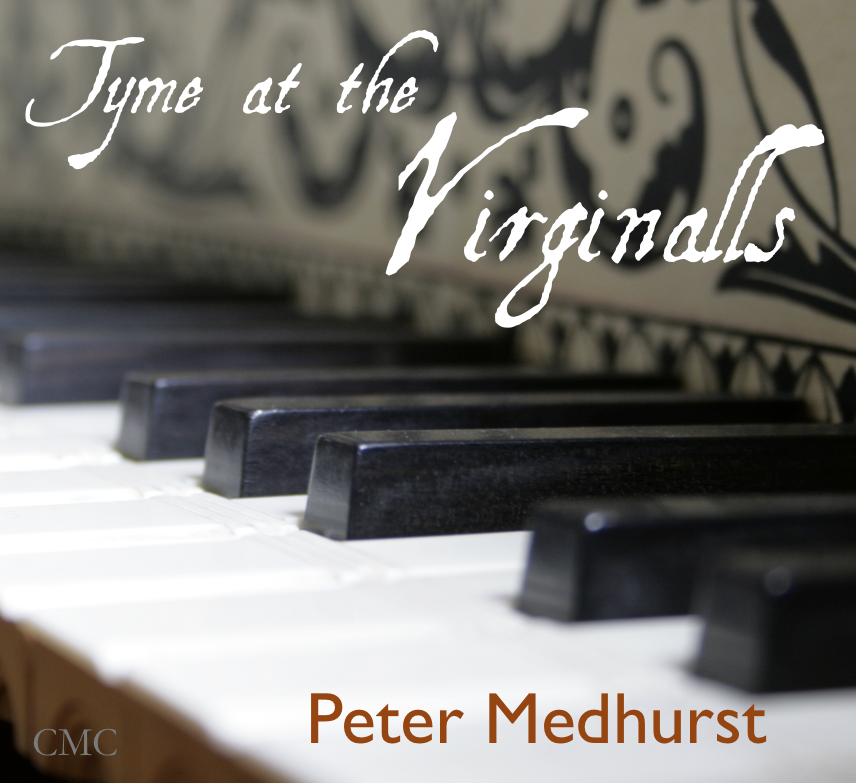
CD of 16th & 17th century keyboard music
The Scotish [sic] Gigg
![mendelssohn scotland journey The Scotish [sic] Gigg](https://petermedhurst.com/wp-content/uploads/2012/08/Peter120813untitled-shoot-2.jpg)
Click to hear Peter Medhurst play the anonymous 16th century 'Scotish Gigg'
Bill Overton 1am - 4am
Now Playing
Volver Carlos Gardel Download 'Volver' on iTunes
Mendelssohn

Mendelssohn: 15 facts about the great composer
His Wedding March is heard as brides walk down the aisle all over the world - but what else is there to know about Felix Mendelssohn?
1. Queen Victoria's tribute
Queen Victoria described Mendelssohn as 'the greatest musical genius since Mozart' and 'the most amiable man. He was quite worshipped by those who knew him intimately, & we have so much appreciated & admired his wonderfully beautiful compositions. We liked & esteemed the excellent man, & looked up to & revered, the wonderful genius, & the great mind, which I fear were too much for the frail delicate body. With it all he was so modest and simple…’
2. A true prodigy
Jakob Ludwig Felix Mendelssohn Bartholdy came from a wealthy Hamburg family who mixed with many of Germany’s leading artists and musicians. A frighteningly clever child prodigy, the young Felix excelled as a painter, poet, athlete, linguist and musician.
3. The young pianist
When he was six, Felix began taking piano lessons from his mother. After the family moved to Berlin, Felix and his three siblings studied piano. He made his public debut at the age of nine.
4. Early compositions
Between the ages of 12 and 14, Mendelssohn wrote 12 string symphonies influenced by Bach, Beethoven and Mozart. His first published work, a piano quartet, was written by the time he was 13. At 15 he composed his first symphony. The following year, Mendelssohn completed his String Octet in E-flat major, the first work that demonstrated his true genius.
5. Ferdinand David - violinist and friend
While still a teenager, Mendelssohn became great friends with composer Ferdinand David - pictured - who was also a fine violinist and for whom Mendelssohn composed his violin concerto. It took him five years, during which time he regularly sought David’s advice. David gave the first performance in 1844. The second was given by the 14 year old Joachim, who would grow up to be Europe’s finest violinist.
6. Reviving the St. Matthew Passion
In 1829, Mendelssohn organised and conducted an acclaimed performance of Bach's St. Matthew Passion, which had by then been quite forgotten. The success of the performance – the first since Bach's death in 1750 – played an important role in reviving Bach's music in Europe.
7. European travels
Mendelssohn traveled widely, and made the first of his ten visits to Britain in 1829. Afterwards he headed off to Italy. The buoyant and optimistic mood with which his Italian Symphony begins bears all the hallmarks of a happy man, eager to make his mark on the work and express his travels through music.
8. In love with Scotland
Mendelssohn was a great lover of Britain and the people of Britain loved him and his music back in equal measure. He travelled widely around the country, with trips to Scotland sparking two of his best-loved works: his Scottish Symphony and the Hebrides Overture.
9. Fingal's Cave
In 1829, Mendelssohn took a memorable trip to the Scottish Island of Staffa and its famous Fingal’s Cave. The journey made an immediate impression – he wrote the first few bars of what became the Hebrides Overture on a postcard to his sister saying ‘how extraordinarily the Hebrides affected me.’
10. Mendelssohn the painter
Mendelssohn was an excellent watercolour painter. He also maintained an enormous correspondence which demonstrate his wit. Sometimes he would draw sketches and cartoons in the text of his letters.
11. At the Leipzig Gewandhaus
As well as composing, Mendelssohn was a highly proficient conductor, being given the plum job of music director at the Leipzig Gewandhaus Orchestra in 1835, when he was just 26. His concert programmes included many of his own works as well as pieces by his contemporaries. He was deluged by offers of music from rising composers including Richard Wagner.
12. Mendelssohn's wife, Cécile
Mendelssohn’s stable family upbringing no doubt contributed to his own very happy marriage in 1837 which gave him five children. His wife was Cécile Charlotte Sophie Jeanrenaud, the daughter of a French clergyman. Cécile died in September 1853, less than six years after her husband.
13. An amazing pianist
Mendelssohn was a brilliant keyboard player. One of his obituarists noted: ‘First and chiefest we esteem his pianoforte-playing, with its amazing elasticity of touch, rapidity, and power; next his scientific and vigorous organ playing.’
14. Elijah in Birmingham
Mendelssohn’s oratorio Elijah was given its premiere in Birmingham in 1846 to an ecstatic audience of 2,000 people. It had taken him some ten years to prepare, including penning most of the libretto himself. It was very much the ‘Messiah’ of its day: hugely popular, cementing Mendelssohn’s position as one of the greatest composers of sacred music.
15. 'No more sorrow or partings'
Mendelssohn suffered from poor health in the final years of his life. A hectic final tour of England left him exhausted and ill. He died aged 38 after a series of strokes. Mendelssohn once described death as a place ‘where it is to be hoped there is still music, but no more sorrow or partings’.
Mendelssohn News
See more Mendelssohn News
Can we please just take a moment to recognise how incredible Janine Jansen sounds here?
Classical music 'makes women more attractive' online, a new recording of mendelssohn's violin concerto, mendelssohn music.
See more Mendelssohn Music
Curious and loving dog almost ruins a live orchestra concert
New releases: yannick nézet-séguin conducts mendelssohn and mario venzago conducts schubert, new releases: 'jubilate: 500 years of cathedral music' & andrew manze conducts mendelssohn.
Discover Music
Mendelssohn Album Reviews
See more Mendelssohn Album Reviews
New releases: Isabelle Faust plays Mendelssohn & Antonio Meneses plays Tchaikovsky , Schumann and Saint-Saens
New releases: rami 'my journey' and cantus 'northern lights', new releases: lso plays mendelssohn and the latest album from riccardo chailly, mendelssohn guides.
See more Mendelssohn Guides
How To Buy Mendelssohn's A Midsummer Night's Dream
Mendelssohn: genius in the genes, discovering mendelssohn.
- Skip to main content
- Keyboard shortcuts for audio player
Performance Today
Scottish mendelssohn.
Felix Mendelssohn's Scottish Symphony made an appearance at this year's Bremen Music Festival in Germany. We hear the Chamber Philharmonic of Bremen play this music inspired by Mendelssohn's journey to Scotland in 1829. Daniel Harding is the conductor.

THE BEST OF SCOTTISH BOOKS

ABOUT THIS BOOK
PUBLISHER: Birlinn General FORMAT: Paperback / softback ISBN: 9781780277257 RRP: £14.99 PAGES: 160 PUBLICATION DATE: October 7, 2021
- Biography and Autobiography
BUY THIS BOOK
- FIND YOUR LOCAL BOOKSHOP (UK AND IRELAND)
- FIND YOUR BOOK IN A SCOTTISH LIBRARY
- WATERSTONES
- THE BOOK DEPOSITORY
As an Amazon Associate we earn from qualifying purchases.
The Soul of the Journey: The Mendelssohns in Scotland and Italy
By (author) diana ambache.
Brother and sister Felix and Fanny Mendelssohn enjoyed a rare bond: they were intimate companions and theirs was one of the most significant musical relationships of the 19th century. They shared and commented on each other’s compositions, each highly appreciative of the other but also offering frank, critical advice.Their travels produced some great music – Felix’s best loved works, the Hebrides Overture and the Scottish Symphony, were inspired by his 1829 visit to Scotland, whilst Fanny’s innovative piano cycle Das Jahr was a musical response to the tour of Italy she made in 1839-40.Combining letters and sketches with an accompanying narrative describing their journeys, this is a wonderful celebration of the two Mendelssohns and a portrait of Scotland and Italy of the time as seen through the eyes of two of the Romantic movement’s most acclaimed composers.
Reviews of The Soul of the Journey: The Mendelssohns in Scotland and Italy
'. . . engagingly written and handsomely illustrated. The Soul of the Journey reminds us that two of the seminal German composers of the 1830s and 1840s were "serious" tourists, who brought back from their travels in Scotland and Italy not only visual reminiscences but inspiration for several of their most significant composition' — Professor R. Larry Todd, Duke University, author of Mendelssohn: A Life in Music and Fanny Hensel: The Other Mendelssohn
Diana Ambache
Diana Ambache has written for numerous publications, including The Independent, Classical Music magazine, BBC Music magazine, Classic FM magazine and Musical Opinion. As a pianist she has given concerts in more than 30 countries and has made 16 CD recordings, many featuring the music of women composers. She was shortlisted for the prestigious European Women of Achievement in 2002 for her work pioneering the revival and promotion of music by female composers (www.womenofnote.co.uk). Her book about Grazyna Bacewicz is published by Cambridge University Press (Elements Women in Music).
NEVER MISS AN ISSUE!
Sign up to receive our fortnightly newsletter.
- Name * First Last
- Your e-mail *
- Comments This field is for validation purposes and should be left unchanged.
LATEST ISSUE: Ray of Light
Also on books from scotland.

Pink Camouflage by Gemma Morgan
‘I had to tell this story for the thousands of other women who have been harmed by the toxic culture …

The Hollow Tree by Philip Miller
‘The man turned around. His hands were dark with blood.

David Robinson Reviews: All Before Me by Esther Rutter
‘This then is a book about recovery, about regaining self-confidence and rediscovering joy.’

QuickFire, Slow Burning by Janette Ayachi
‘Things are shed when people listen to poetry.’

Slum Boy by Juano Diaz
‘But best of all it is dead silent: no sound of greetin’ weans, no shouting staff, no screaming- dru …

For Our Sins by James Oswald
‘If readers enjoy what you’ve written, they’ll keep on coming back for more.’
FEATURED AUTHOR: Isobel McDonald

Isobel McDonald is Curator of Social History at Glasgow Museums. Having originally studied archaeology at Edinburgh University, she had expected to go into fieldwork, however a chance conversation with a friend about job opportunities at the British Mu …
Read more View all authors
OAE/Schiff review – Mendelssohn deep dive is charged with energy and colour
Queen Elizabeth Hall, London Two of Mendelssohn’s symphonies plus his second piano concerto were almost too much of a good thing, but not when played with such delicacy and spirit
T hree nights, three concertos and five symphonies: the Orchestra of the Age of Enlightenment is approaching its deep dive into Mendelssohn with the kind of intensity this still-slightly-underrated composer doesn’t often receive. András Schiff is both conductor and, in the two piano concertos, soloist. The Blüthner fortepiano he’s playing looks like it wants to be a modern concert grand when it grows up. It’s a big instrument for its kind and, in the Piano Concerto No 2 – which began this second concert of the series – its clear, bright tone was a good match for the orchestra. This wasn’t an overly lyrical performance, even though the song-like slow movement flowed beautifully; it was, however, charged with unflagging energy. Schiff picked out the melodies strongly, even while keeping the busy accompanying figuration brilliantly delicate – the finale was a reminder that Mendelssohn, who gave the premiere, was himself quite the virtuoso.
As an encore Schiff played the Variations Sérieuses, a heavyweight solo piano piece lasting well over 10 minutes, probably a meatier item than necessary at this point. Certainly by the time we got to the closing moments of the Reformation Symphony, which followed, the performance had taken on an end-of-evening energy, even though there was another whole symphony to come after the interval.
Too much of a good thing? Very nearly – but not quite. Both symphonies found the orchestra sounding invigorated, and nothing dragged. The Reformation Symphony had started with the instruments blending together to sound like an organ – a small one, nothing too grand – and finished in a blaze of rasping brass, including the low grumble of a serpent . There was much character and colour in between, with the stereo placing of the violins creating lively effects and with some perky playing in the outdoorsy second movement. In the Scottish Symphony the strings took a moment to settle, but it was the clarinet solos that stole the show, before the work romped home in a delightfully unguarded competition between the four horns on one side and the timpani on the other. Schiff’s conducting may seem small and neat but it draws out big playing.
- Classical music
- Orchestra of the Age of Enlightenment
Comments (…)
Most viewed.
Mendelssohn in Scotland
- Why Scotland?
- Mendelssohn the Artist
In London before the Scottish Journey
- The Journey North - Wednesday 22 to Friday 24 July 1829
- Edinburgh 26 to 30 July 1829
- Abbotsford and Melrose, 31 July 1829
- The Highlands: Edinburgh to Tummel Bridge
- The Highlands: Tummel Bridge to Fort William
- The Highlands: Fort William to Oban and Over to Mull
- The Islands: Staffa and Iona
- The return journey: Oban to Glasgow
- Glasgow, Loch Lomond and the Trossachs
- Scottish Symphony
- Hebrides Overture
Before the Scottish tour, Felix went first to London where he arrived in April 1829 and made an immediate impact on London concert life. This was the beginning of his long and fruitful association with the capital which he was to visit nine more times during his life. During this 1829 visit he conducted his first symphony, with its alternative 3rd movement which was his own orchestration of the Scherzo from the Octet, and he also gave the UK premiere of Beethoven’s Emperor Concerto , impressing audiences by playing the solo piano part from memory.
Whilst still in London Felix and Karl Klingemann got together to discuss their forthcoming trip to Scotland and Felix recorded the occasion with a sketch of a table spread with food and conspicuously in the middle of the table, a Map of Scotland.

Frontispiece for the tour of Scotland: the planning session, an interior showing a table littered with the debris of a meal and a volume prominently labelled “MAP/SCOTLAND”. A note on the opposite page mentions “Lunch” on 27 June, apparently with Klingemann. Bodleian notebook. 12a r
This same map still exists and is in the possession of Mendelssohn’s Great Granddaughter, Cecile Stheeman, who lives in Eastbourne on the south coast of England and here is a photo, taken in 2009, of Mrs Stheeman holding that same map.

Cecile Stheeman holding Mendelssohn’s Map of Scotland. In the background, a portrait of her great grandmother, Cecile Mendelssohn, née Jeanrenaud.
Their intended journey was described by Mendelssohn in a letter home from Edinburgh on 28 July.
Felix Mendelssohn – letter, Edinburgh, 28 July 1829:
The Highland journey will be as follows: via Stirling, Perth, Dunkeld, and the waterfalls to Blair Atholl; thence on foot over the hills to Inverary, to Glencoe, the Isle of Staffa, and the Isle of Islay; there a stay of several days will be made, because Sir Alexander Johnston has sent after me a letter of introduction to Sir Walter Campbell, the lord, owner, and tyrant of the island, whom a word of Johnston’s tames and turns into a willing guide. From thence up the Clyde to Glasgow, then to Ben Lomond, which with the Loch Lomond forms the Highland Lion, to Loch Earn, Ben Voirlich, Loch Katrine; then to Cumberland.
In fact they never got as far as Islay; perhaps they ran out of time, or perhaps Felix’s experience of being sea sick on their trip to see the Isle of Staffa was enough to put him off another ferry journey to a Hebridean island! Their actual route once they reached Scotland can be seen on the map below.

These images, protected by copyright and watermark, are for reference use only. The downloading, reproduction, copying, publication or distribution of any image that appears on this website is forbidden by law.
Custom Drupal Website by Turtlereality

IMAGES
VIDEO
COMMENTS
Mendelssohn's Scottish Journey. In the summer of 1829, the 20-year-old Felix Mendelssohn-Bartholdy made a three-week visit to Scotland which was to result in the writing of two of his best-loved works: the Overture - The Hebrides, and the Symphony No 3 in A minor (Scottish). Lovers of Mendelssohn's music will be familiar with these two works, but they may be less familiar with the details ...
In the spring of 1829 Mendelssohn made his first journey to England, conducting his Symphony No. 1 in C Minor (1824) at the London Philharmonic Society. In the summer he went to Scotland, of which he gave many poetic accounts in his evocative letters. He went there "with a rake for folksongs, an ear for the lovely, fragrant countryside, and a heart for the bare legs of the natives."
In April 1829, the 20-year-old Felix Mendelssohn made his first journey to England. He took the capital by storm, conducting his first symphony with the London Philharmonic and playing Beethoven's Emperor concerto from memory, which thrilled audiences. He even organized a benefit concert for Silesian flood victims involving many of the best ...
Although it was the fifth and final of Mendelssohn's symphonies to be completed, it was the third to be published, and has subsequently been known as Symphony No. 3. [3] Intriguingly, despite describing the work as his 'Scottish Symphony' to his family in 1829, by the time the work was published in 1842 Mendelssohn never publicly called ...
MENDELSSOHN IN SCOTLAND The 1829 tour of the Highlands 7 days in the North, departing 2 May 2023. 7 days from £2,799 • Departing 2 May 2023. ... Felix Mendelssohn resolved to set off on a two-week journey through Scotland with his London- based friend, Karl Klingemann. The adventure was to supply Mendelssohn with inspiration for some of his ...
Brother and sister Felix and Fanny Mendelssohn enjoyed a rare bond: they were intimate companions and theirs was one of the most significant musical relationships of the 19th century. ... Felix's best loved works, the Hebrides Overture and the Scottish Symphony, were inspired by his 1829 visit to Scotland, whilst Fanny's innovative piano cycle ...
The Hebrides (/ ˈ h ɛ b r ɪ d iː z /; German: Die Hebriden) is a concert overture that was composed by Felix Mendelssohn in 1830, revised in 1832, and published the next year as Mendelssohn's Op. 26. Some consider it an early tone poem.. It was inspired by one of Mendelssohn's trips to the British Isles, specifically an 1829 excursion to the Scottish island of Staffa, with its basalt sea ...
WHAT IF the famous German composer Mendelssohn had social media on his 1829 trip to Scotland!?Ahead of our live performances of his 'Scottish' Symphony at Gl...
Abstract. Felix Mendelssohn (Scotland 1829) and Fanny Mendelssohn-Hensel (Italy 1839-40) made journeys which inspired their creativity. The book knits together their stories, as uniquely close ...
Brother and sister Felix and Fanny Mendelssohn enjoyed a rare bond: they were intimate companions and theirs was one of the most significant musical relationships of the 19th century. ... Felix's best loved works, the Hebrides Overture and the Scottish Symphony, were inspired by his 1829 visit to Scotland, whilst Fanny's innovative piano cycle ...
In 1829, Mendelssohn took a memorable trip to the Scottish Island of Staffa and its famous Fingal's Cave. The journey made an immediate impression - he wrote the first few bars of what became the Hebrides Overture on a postcard to his sister saying 'how extraordinarily the Hebrides affected me.'
Mendelssohn's "Scottish" Symphony opens with a brooding and atmospheric introduction, reminiscent of the misty landscapes and ancient ruins that fascinated the composer during his travels. The dark and mysterious character of the music sets the stage for the dramatic journey that lies ahead. Gradually, the symphony unfolds with a sense of ...
We hear the Chamber Philharmonic of Bremen play this music inspired by Mendelssohn's journey to Scotland in 1829. Daniel Harding is the conductor. Scottish Mendelssohn.
My journey through parts of Scotland with Mendelssohns Scottish symphony playing in background. #1800s #classicalmusic #scotland #felixmendelssohn #mendelsso...
Wednesday 22 to Friday 24 July 1829. Mendelssohn and Klingemann set out on their journey to Scotland on Wednesday 22 July 1829, travelling north by stagecoach via York where Mendelssohn stopped to sketch the Minster, and Durham where he sketched the Cathedral. The view that he sketched in York is still just available to a modern traveller from ...
The Soul of the Journey: The Mendelssohns in Scotland and Italy By (author) Diana Ambache. Brother and sister Felix and Fanny Mendelssohn enjoyed a rare bond: they were intimate companions and theirs was one of the most significant musical relationships of the 19th century. They shared and commented on each other's compositions, each highly ...
Mendelssohn in Scotland. 35 likes. MendelssohninScotland tells the story of Felix Mendelssohn's journey to Scotland in 1829
Brother and sister Felix and Fanny Mendelssohn enjoyed a rare bond: they were intimate companions and theirs was one of the most significant musical relationships of the 19th century. ... Felix's best loved works, the Hebrides Overture and the Scottish Symphony, were inspired by his 1829 visit to Scotland, whilst Fanny's innovative piano ...
Two of Mendelssohn's symphonies plus his second piano concerto were almost too much of a good thing, but not when played with such delicacy and spirit Erica Jeal Fri 26 Apr 2024 08.04 EDT Last ...
Felix Mendelssohn - letter, Edinburgh, 28 July 1829: The Highland journey will be as follows: via Stirling, Perth, Dunkeld, and the waterfalls to Blair Atholl; thence on foot over the hills to Inverary, to Glencoe, the Isle of Staffa, and the Isle of Islay; there a stay of several days will be made, because Sir Alexander Johnston has sent ...
30 likes, 1 comments - solopackers on April 29, 2024: "Join us on a journey through the misty Highlands of Scotland with Solopackers. From ancient castles to breathtaking landscapes, Scotland ...". Solopackers - Social Travel App | Join us on a journey through the misty Highlands of Scotland with Solopackers.